
Vítězný projekt nového hřbitova do Stockholmu
Na severozápadě od švédského hlavního města se nachází přírodní oblast Järvafältet, kde by měl v následujících letech na pozemku o rozloze 42 hektarů vzniknout nový hřbitov. Konkrétně se jedná o území mezi Hjulstakorset, Granholmstoppen a městskými čtvrtěmi Tensta, Hjulsta a Akalla.
Vítězný návrh hřbitova vzešel z dvoukolové mezinárodní soutěže, při níž porota vybírala se 111 projektů předložených převážně zahradními architekty. Podle poroty je 'Öarna' “velice krásný a empatický návrh“, který dodává místu charakter a identitu hřbitova. Porotci byli rovněž nadšeni citlivostí projektu, uměleckým přístupem, pokorou k místu a důvěrou v další rozvoj.
1. cena: Öarna - Kristine Jensens, Poul Ingemann
2. cena: Skogsbrynets gräns - Topotek 1 (Martin Rein-Cano, Lorenz Dexler)
3. cena: Growth Renewal Decay - Landskapslaget (Mikael Johansson, Linda Teng, Julia Ternström)
3. cena: Björksalar - Jöran Bellman
Více informací >
The new cemetery of Järväfältet will become a modern place to rest. The burial sites will be a part of a modern cultural patchwork landscape, as an evident and natural part of a recreational site in the centre of a multiethnic part of Stockholm. The ambition is to add high architectural and artistic value to the area, to create a strong identity of place. In order to contribute to a sense of community for residents as well as every body else who makes their way to the coming cemetery and the surrounding landscape. Archaeological founds, new residual landscapes and recreational areas will, along side a variety of burial customs and types, create integration in time and space. In between cultural expressions and traditions – new, as well as old ones.
The botanical and cultural diversity of the existing landscape is a unique story of cultural landscaping. The history of this landscape, and the dynamic development processes, will be made a valid part of the new identity. This proposal identifies the value of a landscape which has been never consciously shaped or configured, but has developed slowly over time – a collage of functions and characters. In stead of changing the landscape into a symbolically charged cemetery, the existing landscape is perceived as one could call a ‘ready-made’, complete with stories of its own and yet free to be complemented with new stories.
The new cemetery is to be completed in stages over a long period of time. To simplify this process, all burial sites are arranged in small autonomous units. Individual islands of burial places in the changing landscapes. All burial units are produced with care of variation, environment and durability. It is proposed that the individual units can be developed separately and specifically to each location. Also, in a multicultural discourse, the individual units can accommodate different symbolic values and expressions. It is this variation which creates a modern cemetery.
The international competition was offered by the Municipality of Stockholm in October 2009. The future cemetery in Järvafältet northwest of Stockholm is an investment of same strategic significance which signifies the initiation of the famous Skogkyrkogården – a cemetery just south of Stockholm. A similar international competition was offered 100 years ago and the winning project by Gunnar Asplund and Sigurd Lewerenz has since been the outline for the long-term development of Skogskyrkogården, now on the UNESCO World Heritage List.
Vítězný návrh hřbitova vzešel z dvoukolové mezinárodní soutěže, při níž porota vybírala se 111 projektů předložených převážně zahradními architekty. Podle poroty je 'Öarna' “velice krásný a empatický návrh“, který dodává místu charakter a identitu hřbitova. Porotci byli rovněž nadšeni citlivostí projektu, uměleckým přístupem, pokorou k místu a důvěrou v další rozvoj.
1. cena: Öarna - Kristine Jensens, Poul Ingemann
2. cena: Skogsbrynets gräns - Topotek 1 (Martin Rein-Cano, Lorenz Dexler)
3. cena: Growth Renewal Decay - Landskapslaget (Mikael Johansson, Linda Teng, Julia Ternström)
3. cena: Björksalar - Jöran Bellman
Více informací >
The new cemetery of Järväfältet will become a modern place to rest. The burial sites will be a part of a modern cultural patchwork landscape, as an evident and natural part of a recreational site in the centre of a multiethnic part of Stockholm. The ambition is to add high architectural and artistic value to the area, to create a strong identity of place. In order to contribute to a sense of community for residents as well as every body else who makes their way to the coming cemetery and the surrounding landscape. Archaeological founds, new residual landscapes and recreational areas will, along side a variety of burial customs and types, create integration in time and space. In between cultural expressions and traditions – new, as well as old ones.
The botanical and cultural diversity of the existing landscape is a unique story of cultural landscaping. The history of this landscape, and the dynamic development processes, will be made a valid part of the new identity. This proposal identifies the value of a landscape which has been never consciously shaped or configured, but has developed slowly over time – a collage of functions and characters. In stead of changing the landscape into a symbolically charged cemetery, the existing landscape is perceived as one could call a ‘ready-made’, complete with stories of its own and yet free to be complemented with new stories.
The new cemetery is to be completed in stages over a long period of time. To simplify this process, all burial sites are arranged in small autonomous units. Individual islands of burial places in the changing landscapes. All burial units are produced with care of variation, environment and durability. It is proposed that the individual units can be developed separately and specifically to each location. Also, in a multicultural discourse, the individual units can accommodate different symbolic values and expressions. It is this variation which creates a modern cemetery.
The international competition was offered by the Municipality of Stockholm in October 2009. The future cemetery in Järvafältet northwest of Stockholm is an investment of same strategic significance which signifies the initiation of the famous Skogkyrkogården – a cemetery just south of Stockholm. A similar international competition was offered 100 years ago and the winning project by Gunnar Asplund and Sigurd Lewerenz has since been the outline for the long-term development of Skogskyrkogården, now on the UNESCO World Heritage List.
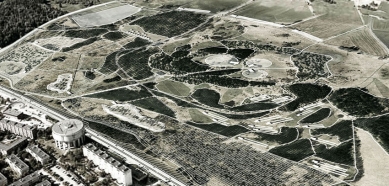
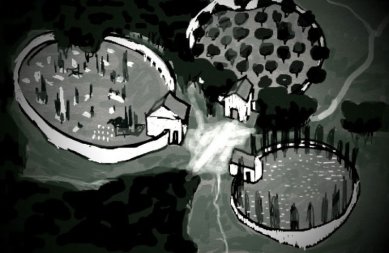
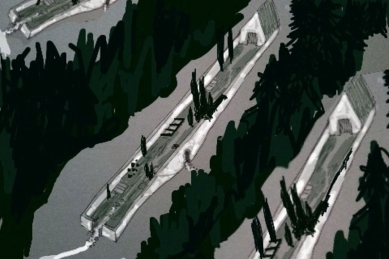
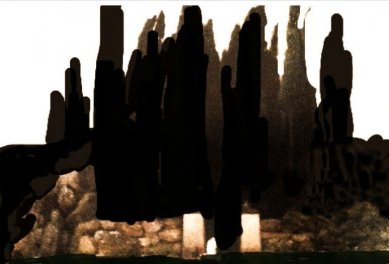
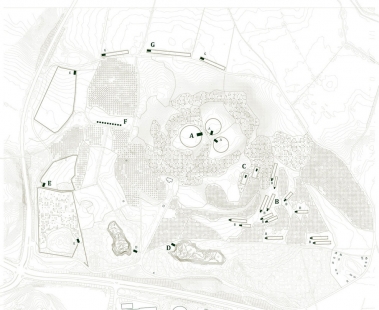
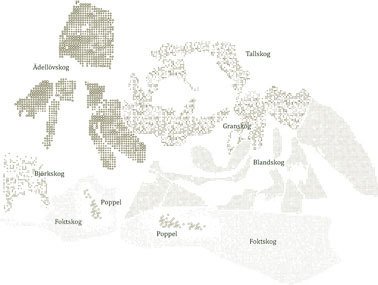
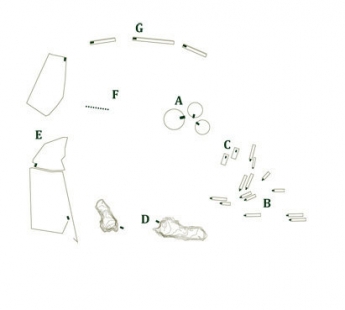
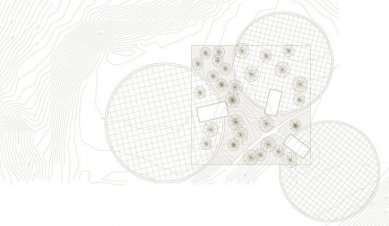
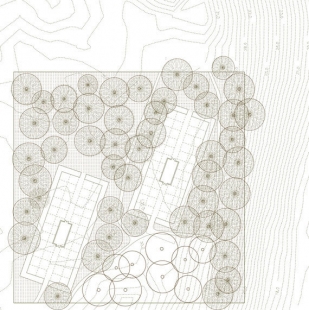
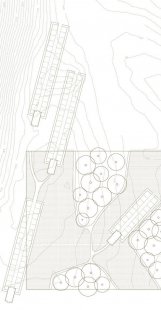
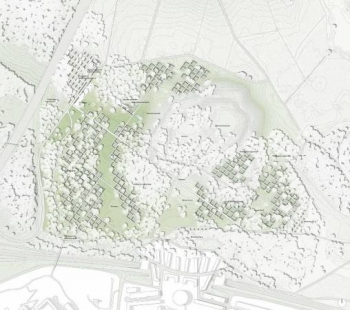
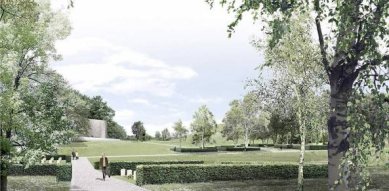
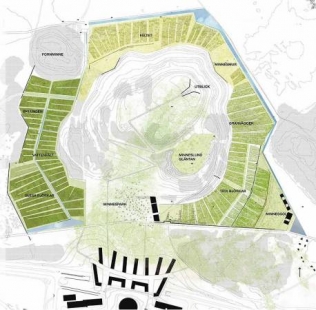
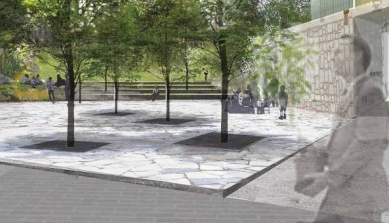
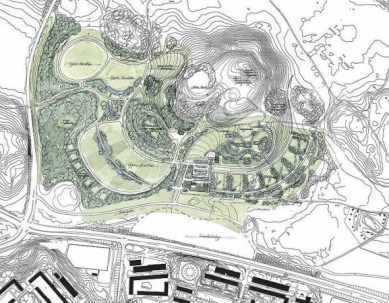
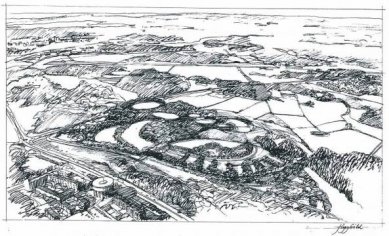
1 komentář
přidat komentář
Předmět
Autor
Datum
Öarna,
Vích
20.09.10 04:51
zobrazit všechny komentáře












